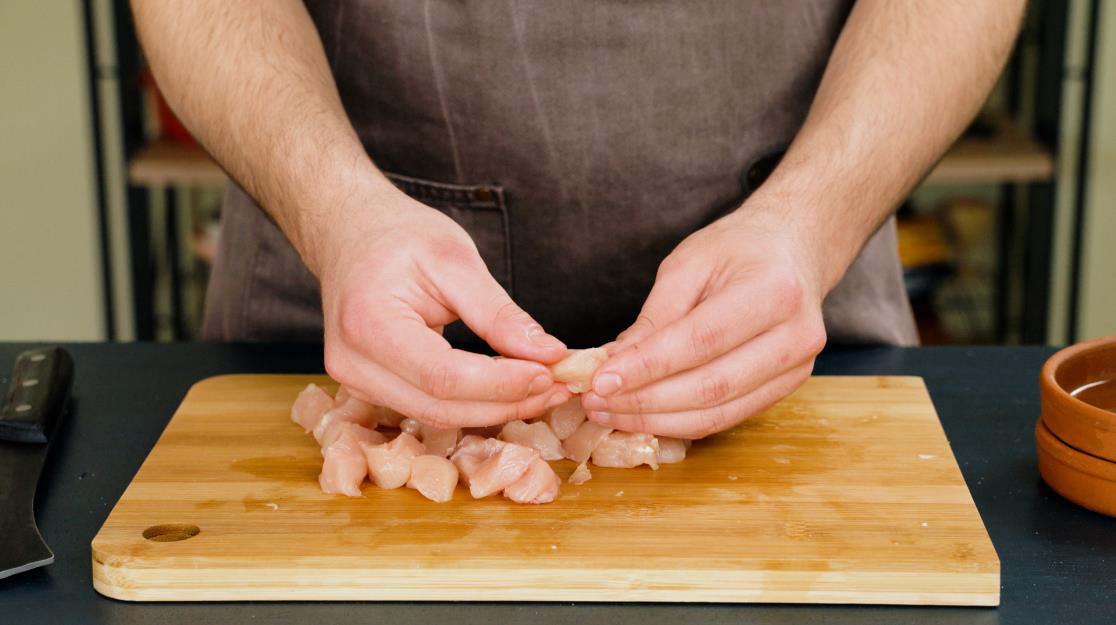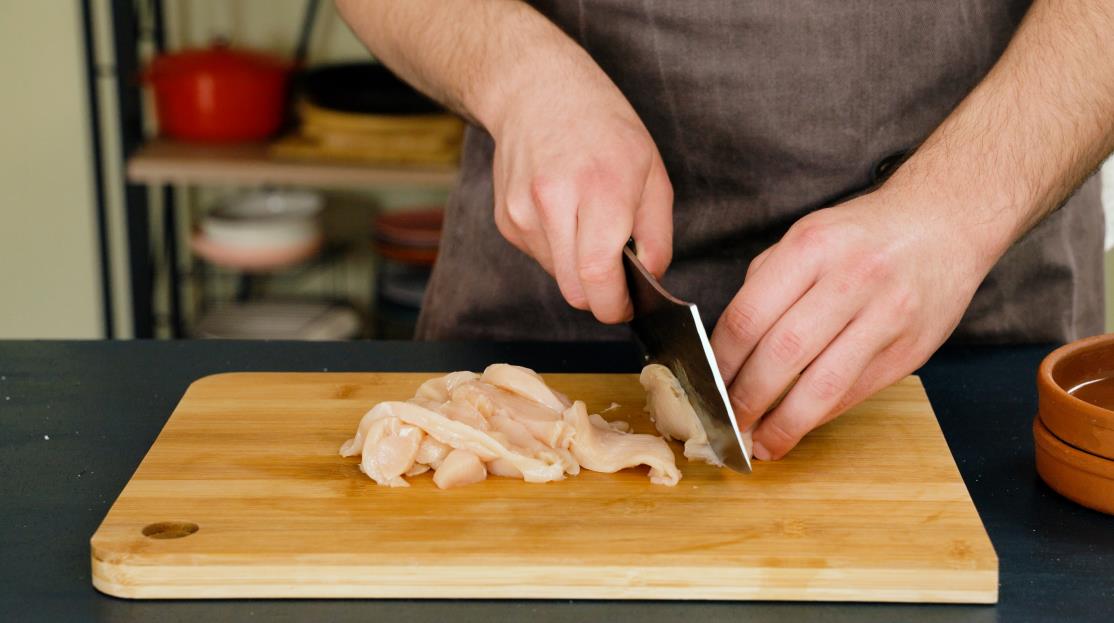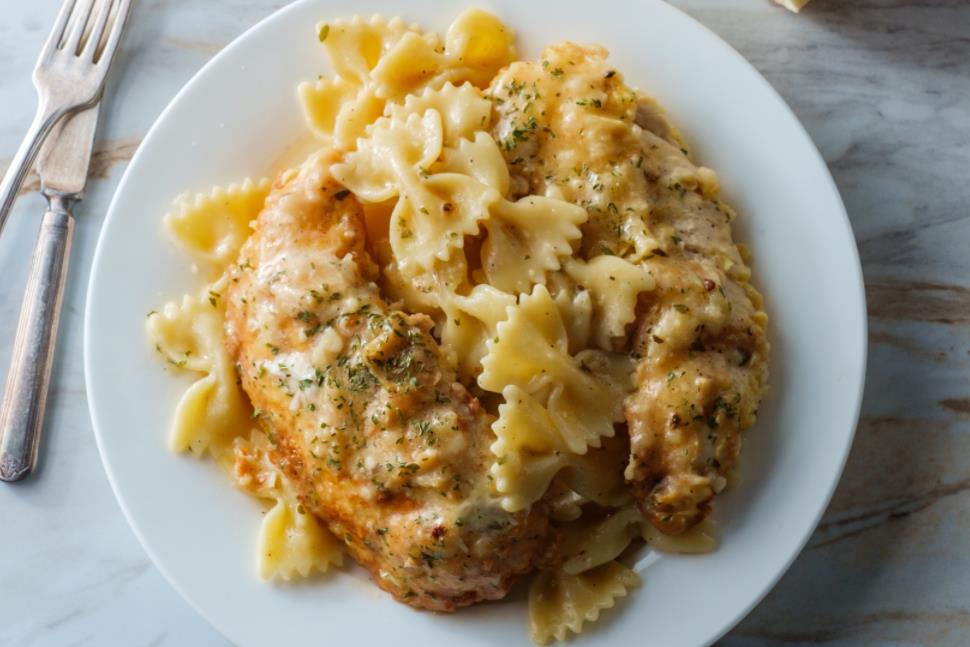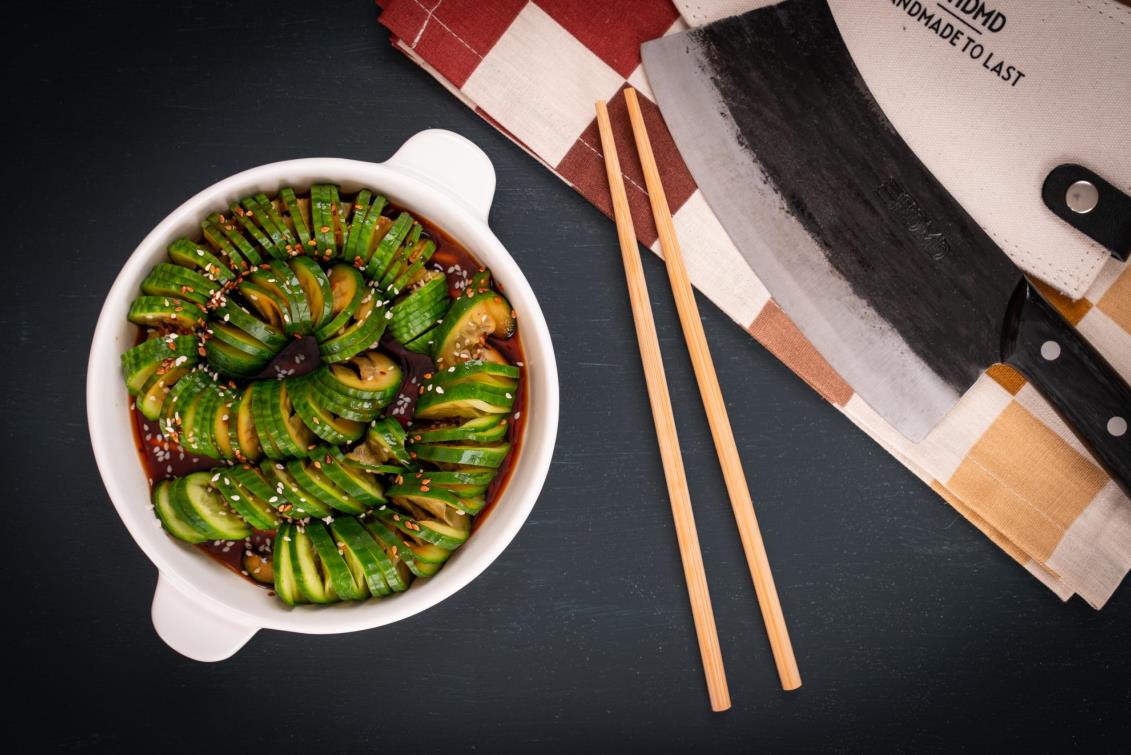Chicken breast is a staple in many kitchens because it cooks quickly, offers good nutrition, and is usually well priced. It’s versatility is also a win with both pro and home cooks. There’s just so much you can do with chicken breast.
HDMD Knives is taking on this popular cut of poultry and we’re going to show you how to prep, cut and use chicken breast to best effect. This article will take you from the chopping board to the table – no mess, no fuss!
Many people find chicken breast offputting because when raw it’s kind of odd-looking and slimy in appearance. Put these silly notions aside readers! Chicken breast is a thousand and one fabulous meal just waiting to happen. Let’s start at the beginning with some simple guidelines.
Table of contents
Washing chicken breasts before using
In some parts of the world such as Asia where poultry is more likely to be bought from a roadside or open – air vendor, it is common practice to wash it before using it.
By washing/rinsing the chicken breasts, you’re spreading potential germs on the chicken flesh all over the kitchen, which is what you DON’T want. Any worrisome bacteria will be eradicated by the cooking process, so you have nothing to worry about if the chicken is of fresh quality to start off with.
Cutting chicken breasts hygiene
Good kitchen hygiene is important!
When dealing with raw chicken, you’re exposing yourself and your kitchen utensils and surfaces to potential bacteria like salmonella, so you should practice good hygiene. Here are our top hygiene tips for handling raw chicken:
- You can use an entirely separate chopping board for raw poultry, this is good practice. ANY board you use though should be thoroughly washed after use in hot soapy water to kill germs
- Wash your hands well before and after touching any raw meat, this is just good kitchen practice
- Heat kills bacteria, so make sure to never undercook chicken. It should be white (not pink) right through to the center of the meat, and the juices should run clear when the meat is pierced
- Put raw chicken in the fridge or freezer immediately after purchasing
- Chicken should be cooked to an internal temperature of 165 F to ensure total hygiene and no food poisoning worries
- Never leave cooked chicken sitting out after cooking, it should be put into either the fridge or freezer within an hour of cooking
- Chicken pieces are safe for freezer storage for 9 months, whole chicken for a year in the freezer, and cooked chicken for 3 or 4 months
Cutting chicken breasts methods
Get these tools ready!
- Sharp chef’s, boning or fillet knife
- Chopping board
- A pair of sharp kitchen scissors/shears is optional but may be handy
Handpicked for you
True cutting power in the palm of your hand
Deboning and skinning your chicken breast
If you debone and trim your chicken breasts yourself, it works out very cost effective as opposed to buying them pre – trimmed. A sharp chef’s knife works beautifully here. Here’s how:
- Thaw the chicken completely first and remove from all packaging.
- Put the whole chicken breast onto the cutting board skin side up. If the breast has wings or legs attached, cut these off and reserve for future use.
- Using your sharp knife, cut down lengthwise straight along the thickest part of the breast, opening the big breast into 2 halves.
- At this stage you can insert your fingers into the cut you’ve made down the middle of the breast. Grab the chicken skin and pull it off. If pulling it off is too difficult, you can use your knife to cut it off too.
- Look inside the large cut you’ve made through the middle of the breast and find the breastbone. It should be right in the middle of the cut.
- On either side of the breastbone, you’re going to carefully cut down, easing the meat on each side away from the bone, to give you 2 breast portions. Scrape along the bone with your knife so that the meat comes away easily. If ribs are still attached don’t stress, the chicken will come away from these easily when you pull it off and away from the breastbone.
- You should now have 2 breasts completely separated from the breastbone and skinned. If you see any remaining bits of bone or skin along the edges of the breasts you can trim these off and discard.
Cubing chicken breast
Cubed chicken breast is great for dishes like soups, stir fries, or omelets. Here is how:
Step 1. Place the chicken breast in front of you, lying lengthways across your chopping board.
Step 2. Holding the breast down securely with one hand, you’re going to cut through it across the grain, so that you’ve cut the chicken breast into thickish slices.

Step 3. Now cut each slice/strip of chicken crosswise, so that you’re left with cubes or blocks of chicken. If you want smaller cubes of chicken, cut each strip of chicken down the middle lengthwise (divide into 2 strips), and then cut crosswise into cubes – they’ll be much finer.

Here is what your chicken breast cubes would look like:

Cutting chicken breast into strips or tenders
Chicken in strips is super for breading and frying or can be used in casseroles and fry ups. It’s very easy to get chicken strips, and here’s how:
Step 1. Place your chicken breast in the middle of the cutting board in front of you, lying lengthways. Hold the chicken breast in place with your non-dominant hand, fingers curled under, so you avoid cuts!
Step 2. Find the grain of the chicken (the white muscle fibers) and cut across that, instead of parallel to it.

Step 3. You’re going to use 1 smooth and decisive stroke for each cut across the chicken breast to divide it into strips of whatever thickness you like. Continue cutting across the breast until the whole breast is cut into strips.

Pro-tip: Put the chicken breast into the freezer for 20 minutes before handling, it firms up the meat and makes it easier to cut through neatly.
Halving and butterflying your chicken breasts
By dividing the breast into 2 conjoined pieces you get butterflied chicken, which can then be stuffed with a filling. If you separate the two halves entirely, you’re going to end up with 2 much thinner halves of chicken breast which can be cooked very quickly for things like schnitzel.
Here’s how:
- Place your chicken breast on the chopping board in front of you, with the flatter side down.
- Now lay your non-dominant hand (the hand that’s not cutting) across the top of the breast lengthways so that your fingertips are over the thickest part of the breast, and your wrist is over the thinner end of the breast.
- Holding the chicken breast down firmly, you’re going to cut horizontally through the breast in a firm yet gentle motion, starting from the thickest side and working carefully towards yourself.
- If you want ‘butterflied’ chicken breast you’re going to stop cutting before you detach the 2 halves entirely, you want them still joined at the end. When you’re done cutting, you can open the 2 joined halves out on the cutting board (like a butterfly) and pound the 2 halves even thinner with a mallet or heavy utensil if you want to.
- If you want 2 entirely separate breast halves, continue cutting right through until you’ve got 2 thin chicken fillets to use.
Our top picks for chicken breast recipes!
Now that we’ve covered prepping and cutting, let’s look at some all – star recipes for you to try out!
Lemon pepper chicken tenders

These chicken tenders are livened up with a tart and tangy lemon sauce that you’ll really enjoy. With a total prep and cook time of just over half and hour, it’s not too fussy either!
Bow tie pasta with chicken

This very quick and easy recipe is filling and tasty for wonderful family suppers or makes enough to have multiple individual servings during the week. It’s got fresh flavor with pan dripping yum factor and makes the most out of quick cook chicken breast.
Szechuan chicken
Szechuan chicken is many people’s favorite memory of their local Chinese restaurant and this home style version packs in authentic flavor.
Quick and easy to make, it’s spicy and so good on cooler days when you’re craving heat and the taste of the East.
Chicken breast FAQs
How do I tell if my chicken breasts have gone off/rotten?
Chicken should be light pink with white fatty pieces. If it’s gone a green or grayish color, best to discard it. It will also have an unpleasant smell of Sulphur or rotten eggs if it’s not safe to eat.
Skin off or on my chicken breasts? What’s the diff?
Leaving the skin on your chicken breasts keeps them moist and traps in wonderful flavor. However, if you’re trying to lose some weight or worried about your cholesterol, remove the skin, it’s much healthier for you.
In conclusion
Chicken breast is very easy to prep and cost effective, particularly if you skin and debone yourself. With loads of tantalizing recipe options available to the home cook, chicken breasts can be a regular fixture for quick and easy meals.
We hope this article has empowered you to use more chicken breast and we look forward to you exploring the HDMD Knives website for other exciting ingredient and prep ideas.












